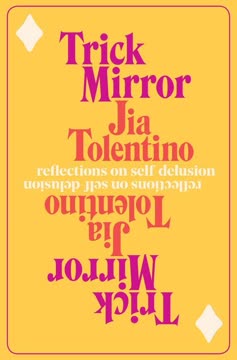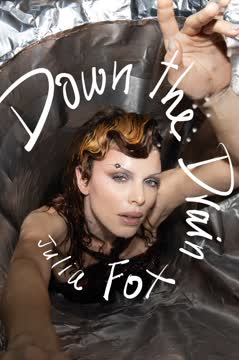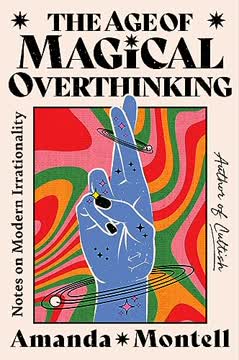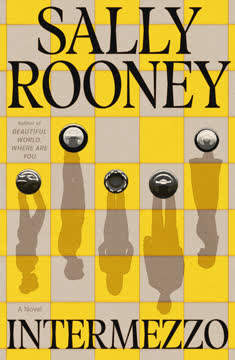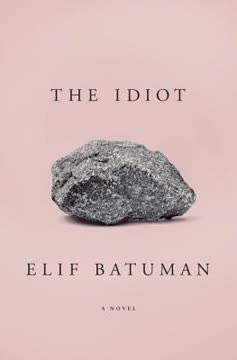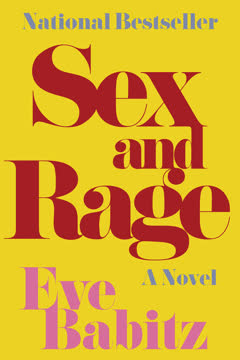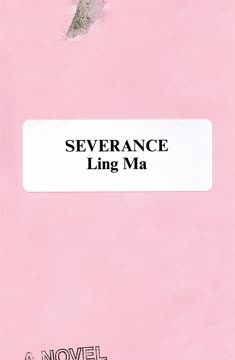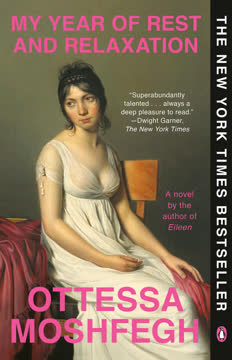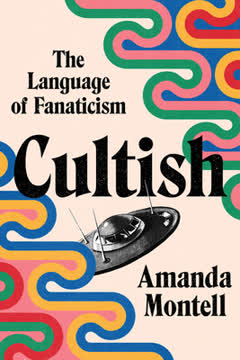Key Takeaways
1. The Trick Mirror of Self-Delusion
Writing is either a way to shed my self-delusions or a way to develop them.
Perpetual confusion. The author grappled with intense confusion during a period of escalating societal conflict (2017-2018), finding it difficult to trust her own thoughts. This led to a suspicion that her conclusions about herself and her environment were as likely to be wrong as right, a doubt she usually tried to extinguish through writing. However, this very act of crafting a coherent narrative made her question if she was merely constructing new self-delusions rather than shedding old ones.
Narrative as self-creation. Tolentino observes that a well-practiced, conclusive narrative is often dubious, whether it's a personal assertion like "I'm not into drama" or a political slogan. Her book, "Trick Mirror," explores how public imagination—through platforms like the internet, reality TV, and cultural ideals—has shaped her understanding of herself and her era. She aimed to "undo their acts of refraction" to see herself clearly, like in a mirror, but acknowledges she might have instead "painted an elaborate mural."
Unforeseen insights. The book's title itself, "Trick Mirror," was a phrase she had used years earlier in a Jezebel piece, describing what women wanted from feminist websites: "a trick mirror that carries the illusion of flawlessness as well as the self-flagellating option of constantly finding fault." This accidental self-reference highlighted how life leaves "breadcrumbs," suggesting that clarity often emerges over time, even if the path isn't immediately understood.
2. The Internet's Performance Trap
Online, performance is mostly arrested in the nebulous realm of sentiment, through an unbroken stream of hearts and likes and eyeballs, aggregated in numbers attached to your name.
From connection to performance. The internet evolved from a Web 1.0 era of open forums and solitary discovery to Web 2.0, where dynamic platforms like MySpace and Blogger made self-generation and constant change central. This shift transformed a pastime into an imperative: digital existence became intertwined with self-worth, leading to a "built-in performance incentive" where communication primarily serves to "make yourself look good."
Erosion of authenticity. The internet's architecture, centered on personal profiles, distorts identity by making it the universe's focal point. This system is profitable, as our desire to replicate ourselves online generates billions for platforms that monetize our attention and data. Unlike offline life with its changing audiences and "backstage" areas for relaxation, the online audience is perpetual, forcing individuals into an endless "job interview" where self-presentation never ceases.
Virtue signaling and opposition. This performance incentive manifests as "virtue signaling," a bipartisan act where righteous political statements become ends in themselves, often detached from real-world action. The internet also maximizes opposition, making mutual enemies a quick way to forge connections and conflict a guaranteed attention-grabber. This dynamic, while sometimes revolutionary, can also lead to deranged takes and the weaponization of righteousness, as seen in Gamergate and Pizzagate, where online battles shaped offline realities.
3. Optimization as a Capitalist Imperative
The ideal woman, in other words, is always optimizing.
The ideal woman's evolution. The contemporary "ideal woman" is a generic, perpetually youthful figure, meticulously curated and broadcast, often through social media. She embodies maximal obedience to market demands—good looks, extended youth, self-presentation skills—and enthusiastically embraces tools to enhance her appeal. This optimization extends to her body, pre-shaped by exercise, and her face, enhanced by expensive skincare and cosmetic procedures, creating an illusion of effortless spontaneity.
Feminism's complicity. Historically, the ideal woman pursued domesticity, male approval, and self-improvement. Today, this ideal coexists with mainstream feminism, which has become market-friendly and over-valorizes individual success. This has entrenched the tyranny of the ideal woman, making relentless self-improvement seem natural, mandatory, and even feminist. Women are encouraged to believe they are the architects of their own power, even as their choices are constrained by social and economic expectations.
Athleisure and ethical beauty. The athleisure industry, a $97 billion category, exemplifies this optimization, serving as a uniform for an "optimized life." It blends performance and appearance, suggesting that expensive hard work for a high-functioning, attractive existence is the best way to live. Furthermore, the beauty ideal has taken on an ethical dimension, where striving for beauty is seen as a moral imperative, and failure to meet it is a "failure of the self." This creates a cycle where women are trapped between capitalism and patriarchy, finding pleasure in individual success while collective morality often suffers.
4. Literary Heroines Reflect Female Trajectories
If you were a girl, and you were imagining your life through literature, you would go from innocence in childhood to sadness in adolescence to bitterness in adulthood—at which point, if you hadn’t killed yourself already, you would simply disappear.
Childhood's brave innocence. Literary heroines in childhood, like Laura Ingalls or Anne Shirley, experience life as an adventure, intrinsically resilient and self-evidently important. Their stories are episodic, allowing sadness and fear to be temporary passages rather than defining traits. These young characters, often perceptive "little writers," are industrious and independent, aware that adulthood, with its expectations of marriage and children, often signals an end to individual desire.
Adolescence's tragic awakening. Teenage heroines, such as Esther Greenwood or the Lisbon sisters, face a future that is unfathomable and often traumatic, their nascent sexuality inextricably linked to death or confinement. They are desired and tragic, overwhelmed by ambiguous destiny, often passive or blind to their own beauty and agency. Their stories highlight how generalized expectations of female conventionality can swiftly separate a woman from herself, leading to a sense of being "defenseless before a dull fatality."
Adulthood's bitter reality. Adult heroines, like Emma Bovary or Anna Karenina, find their long-anticipated future dismal and disappointing, often trapped in unhappy marriages that curtail their freedom and aspirations. Their desires, if not suppressed, can make them "fatally monstrous." While marriage has historically been a totalizing institution for women, contemporary fiction, particularly by authors like Elena Ferrante, explores how women negotiate these constraints, asserting selfhood and control through complex relationships and narratives that challenge traditional "heroine's texts."
5. Ecstasy: The Blurred Line of Transcendence
Church never felt much more like virtue than drugs did, and drugs never felt much more sinful than church.
Religious upbringing and defection. The author grew up in a sprawling Houston megachurch, the "Repentagon," where spiritual matters initially felt simple and absolute. However, as she entered middle school, she became aware of her ambivalence, troubled by the church's growing conservatism and hypocrisy, such as its anti-gay stance and the prosperity gospel. This led to a gradual defection from institutional religion, driven by a desire to reconcile her burgeoning political beliefs with her spiritual inheritance.
Finding ecstasy outside the church. Her spiritual journey led her to discover "chopped and screwed" hip-hop music, which, like religion, offered a "total system" that entangled sin and salvation, providing both unease and reassurance. This mirrored her later experiences with drugs like ecstasy (molly), which she found appealing for similar reasons to religion: both offered a path toward transcendence, a way to access an "extrahuman world of rapture and pardon" that felt as real as it was experienced.
The nature of revelation. Ecstasy, or MDMA, an empathogen, induces a state of empathy and "touching within," stripping away inhibitions and making one's well-being feel inseparable from the group. This chemical ecstasy, like religious visions described by mystics such as Julian of Norwich, provides a sense of being "outside yourself," a "supreme spiritual pleasure" followed by a potential comedown. The author questions whether her inclination toward ecstasy signifies a lingering belief in divinity or if that ecstatic tendency was the sole reason she ever believed at all, blurring the lines between virtue and vice.
6. A Generation Defined by Scams
The financial crisis of 2008 was an extended, flamboyant demonstration of the fact that one of the best bids a person can make for financial safety in America is to get really good at exploiting other people.
The normalization of exploitation. The millennial generation came of age witnessing systemic scams, from the 2008 financial crisis—a "confidence trick" carried off by bankers who were bailed out and often enriched—to the student debt disaster, where education became an impossibly expensive, often bad-faith investment. This era taught that exploiting others could be a path to financial safety, making scamming seem like the natural order of things.
Social media's deceptive promise. Mark Zuckerberg's Facebook, initially a "narcissistic dream" for college students, evolved into a platform where users are the product, their attention and data sold to advertisers and special interest groups. Facebook's business model, built on "doublespeak" (advertising connection while creating isolation), manipulates behavior and reshapes media, forcing publications to prioritize viral, emotionally charged content. This has solidified the idea that selfhood is a "well-performing public avatar," where personal stories and relationships are monetized for economic survival.
Girlbosses, disruptors, and Trump. The "girlboss" phenomenon, exemplified by Sophia Amoruso, framed wealth acquisition as feminist progress, encouraging women to believe personal advancement is political. Meanwhile, "disruptor" companies like Amazon and Uber dismantled social structures, exploiting workers and consumers by shifting risk onto individuals while promising convenience. Finally, the election of Donald Trump, a "lifelong scammer," served as the "definitive scam," validating exploitation as a quintessential American ethos and demonstrating that "scammers are always safest at the top."
7. Idealized Institutions Mask Deep-Seated Violence
The school’s self-conception will never become completely true until it can admit the extent to which it has always been false: that its fetishized campus was built by slave laborers; that it has, in fact, a long history of gang rape; that Alderman Library, where I spent so many nights writing terrible papers, was named after a staunch eugenicist who, as president of the university, thanked the Ku Klux Klan for a donation with the sign-off “Faithfully yours.”
UVA's deceptive idyll. The University of Virginia (UVA) presents itself as a "honeyed Eden" of Southern grace and intellectual ideals, a "place like no other" steeped in tradition. This seductive self-image, however, actively suppresses a dark history of sexual and racial violence. The author's initial comfort with UVA's traditionalism, a stark contrast to her conservative upbringing, later gave way to a realization of the systemic problems masked by its genteel facade.
The "Rolling Stone" fallout. The infamous 2014 "A Rape on Campus" article in Rolling Stone, though later discredited for its factual inaccuracies, exposed UVA's long-standing institutional dismissal of sexual assault. The article, and the subsequent investigations, revealed a pattern of overlooking violence, exemplified by past gang rapes and the school's honor code that prioritized plagiarism over sexual assault. The author, initially blind to these issues, experienced a "call-is-coming-from-inside-the-house nausea" as her personal history intersected with the public scandal.
Intertwined violence and historical amnesia. UVA's history of gendered and racial violence is deeply intertwined, from its founding by Thomas Jefferson (a slave owner) to the disproportionate attention given to missing white women compared to women of color. Fraternities, a significant source of institutional capital, have historically provided social cover for violence against women and hazing, perpetuating a "Männerbund" (men-league) culture. The school's "amnesia" about its past, including its reliance on slave labor and its presidents' ties to eugenics and the KKK, highlights how idealized narratives actively obscure traumatic realities, making it difficult to confront and change systemic injustices.
8. The Double-Edged Sword of the "Difficult Woman"
But when the case for a woman’s worth is built partly on the unfairness of what’s leveled at her, things get slippery, especially as the internet expands the range and reach of hate and unfair scrutiny into infinity—a fact that holds even as feminist ideas become mainstream.
Feminism's reframing of difficulty. Over the past decade, feminism has normalized understanding women's lives on feminist terms, reframing "female difficulty" from a liability to an asset. This has been driven by "narrative engineering," retrospectively rewriting celebrity lives (e.g., Britney Spears, Monica Lewinsky) as feminist texts that expose patriarchal judgment. This pedagogical method, while engaging, risks blurring the line between valuing a woman despite mistreatment and valuing her because of it.
The limits of celebrity feminism. While reclaiming stories of famous women can empower ordinary women, applying this "pop-feminist celebrity discourse" to political figures like Kellyanne Conway or Sarah Huckabee Sanders reveals its limitations. The ubiquity of sexism means that criticism of women, even for their actions, can be immediately framed as sexist, allowing figures in power to weaponize this defense. This creates a situation where "harsh criticism of a woman is itself always sexist," and receiving such criticism can be seen as an indication of worth, regardless of actual behavior.
The "unruly" vs. "lifestyle" divide. The "difficult woman" discourse, while celebrating those who push boundaries (e.g., Melissa McCarthy, Serena Williams), often overlooks the "lifestyle supermom" (e.g., Gwyneth Paltrow, Ivanka Trump) who adheres to conventional femininity. This creates a new form of judgment, where women are admired or hated based on their perceived adherence to or rejection of specific ideals. The author questions whether the ultimate goal is empowerment or if this discourse merely re-idolizes women on new, complicated terms, still fixated on parsing "female worth and liberation" through meticulous personal attention.
9. Marriage: A Ritual of Contradictions
There’s something deeper about our relationship now,” he said. “Trust me—when we got married, something just changed.”
The wedding industrial complex. The author's aversion to marriage, despite being in a long-term relationship, stems from the overwhelming and often contradictory nature of the wedding industry. Modern weddings, costing an average of $30,000, are presented as deeply traditional and personal, yet they are largely manufactured by businesses that invent customs to legitimize excess. This creates a "theme park of upward mobility" where couples, particularly women, are expected to invest immense time, money, and emotional energy into a single, performative day.
Historical and gendered inequality. Historically, marriage has been detrimental to women, stripping them of legal rights, property, and even their identity under doctrines like coverture. While the Supreme Court's legalization of same-sex marriage (Obergefell v. Hodges) validated marriage as a mutual affirmation of love and commitment, bringing it into a more gender-equal future, traditional straight marriage still perpetuates significant gender inequality. Married men often report better mental health and live longer, while married women report worse mental health and die earlier, largely due to the unequal distribution of unpaid domestic labor.
The enduring pressure. Despite women delaying or forgoing marriage more often, and the institution becoming more equitable, societal pressure, particularly on women, to marry remains intense and intrusive. The cultural script often portrays women as "salivating for a diamond," while men "grudgingly acquiesce." This creates a "cultural psychosis" where women are expected to cram a lifetime's worth of self-interest into one expensive day. The author's personal experience reflects this, as her disinterest in marriage is met with persistent questioning and attempts to "fix" her perspective, highlighting the deep-seated, often irrational, societal investment in this ritual.
Last updated:
Review Summary
Trick Mirror is a collection of essays by Jia Tolentino that has received mixed reviews. Many readers praise Tolentino's insightful cultural criticism and writing style, particularly her ability to weave personal experiences with broader societal observations. Popular essays discuss topics like the internet, feminism, and modern life. Some critics found the book repetitive or covering well-trodden ground. Overall, readers appreciate Tolentino's sharp analysis and provocative ideas, even if they don't always agree with her conclusions. The book is seen as a timely reflection on contemporary issues.
Similar Books
Download PDF
Download EPUB
.epub digital book format is ideal for reading ebooks on phones, tablets, and e-readers.
